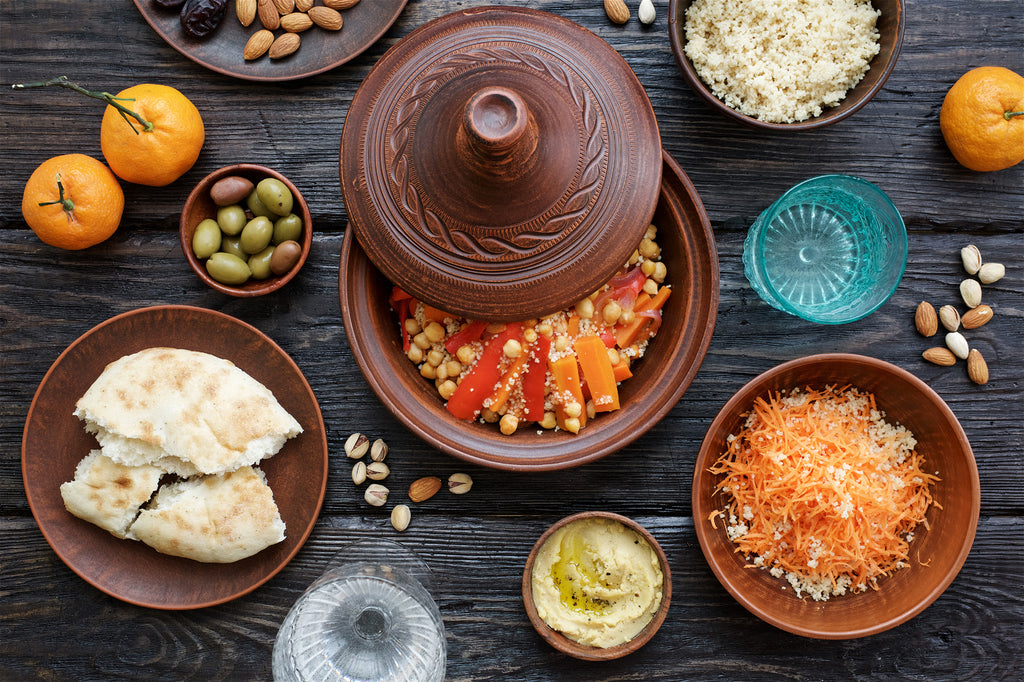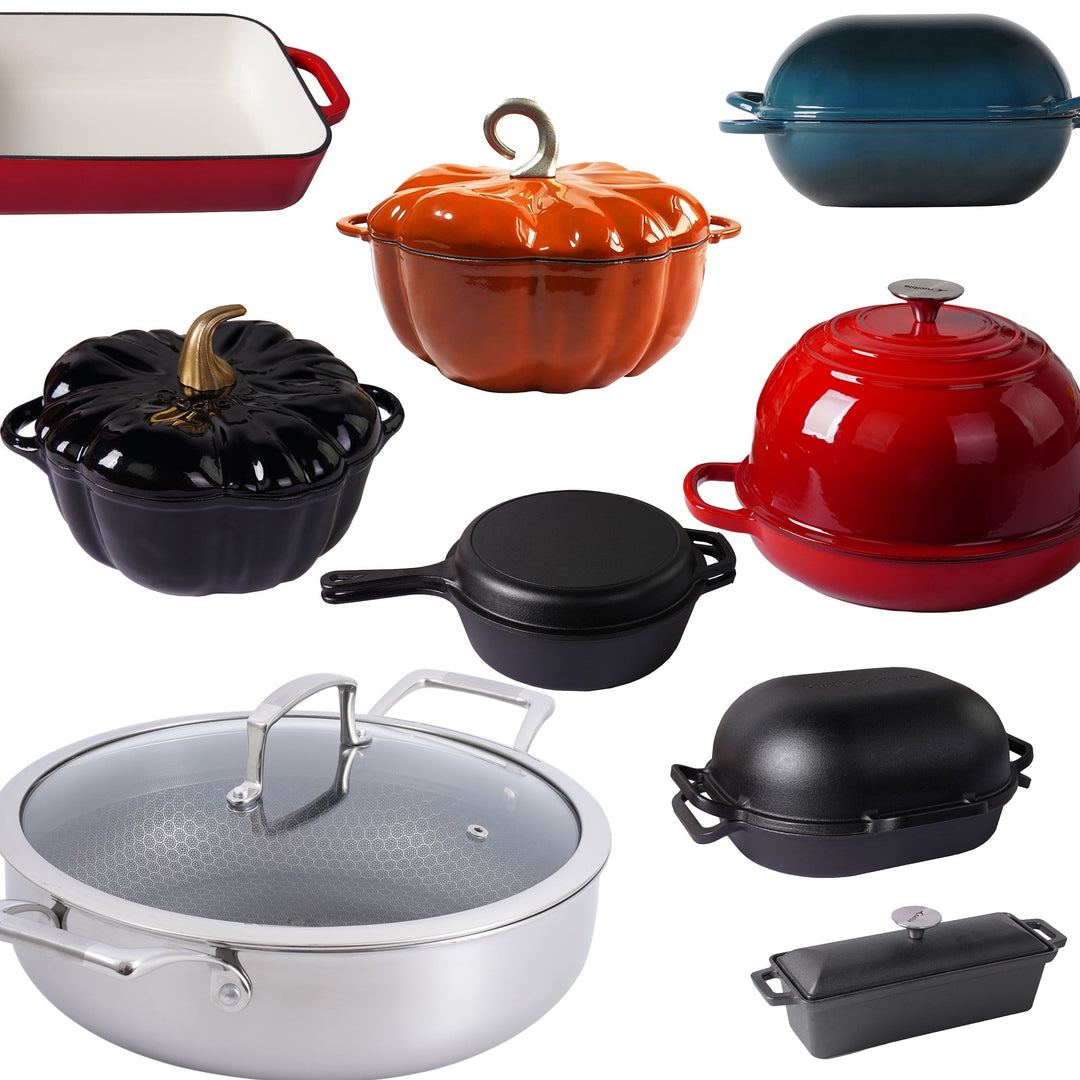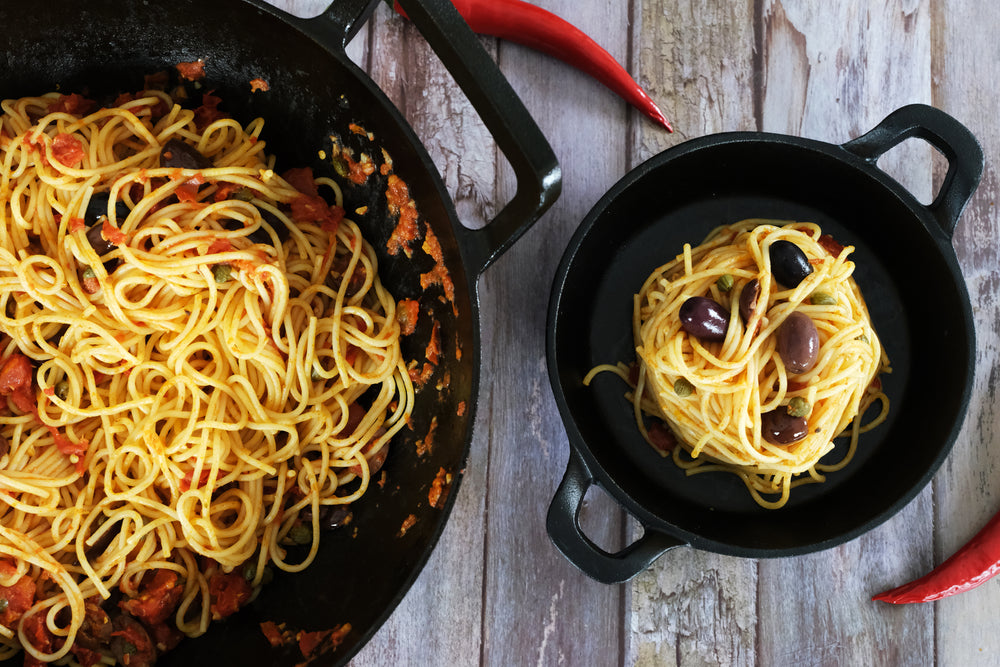Tagine Cookware

Tagine cookware is a traditional and versatile cooking vessel that originates from North Africa, specifically Morocco. The name "tagine" refers to both the cone-shaped pot and the dishes cooked inside it. The unique shape of the tagine pot allows for slow cooking, which helps to infuse flavors and keep food moist.

The most traditional model of tagine cookware is made of clay and has a conical lid that sits on top of the base. The lid helps to trap steam and circulate heat, which cooks the food slowly and evenly. Modern tagine cookware is also available in a variety of materials such as cast iron, ceramic, and enameled cast iron. These materials provide an alternative to traditional clay, and offer better heat distribution, durability, and ease of cleaning.

One of the most popular dishes cooked in a tagine is the traditional Moroccan tagine, a slow-cooked stew made with meat, vegetables, and spices. Other dishes that can be cooked in a tagine include braised meats, stews, soups, and even desserts. The slow cooking process of the tagine also makes it ideal for cooking tough cuts of meat, such as lamb shanks or beef brisket, as it helps to break down the fibers and make them tender.

Compared to other cookware, tagine has a few pros and cons. On the plus side, tagine's unique shape and slow cooking method allows for the infusion of flavors and added moisture in dishes. It is also a versatile cooking vessel that can be used on the stovetop or in the oven.

However, traditional clay tagine cookware is fragile and can crack or chip easily. Also, it is not suitable for high-heat cooking, and should only be used on low to medium heat. Modern tagine cookware made of cast iron, ceramic, and enameled cast iron are more durable but also heavier than traditional clay tagine.

In conclusion, Tagine cookware is a traditional and versatile cooking vessel that has its roots in North Africa. Its unique shape and slow cooking method allows for the infusion of flavors and added moisture in dishes. Modern tagine cookware made of cast iron, ceramic, and enameled cast iron are more durable but also heavier than traditional clay tagine. This cookware has its own advantages and disadvantages, but it is a great addition to any kitchen for those who want to experience the traditional North African cuisine.
















Leave a comment